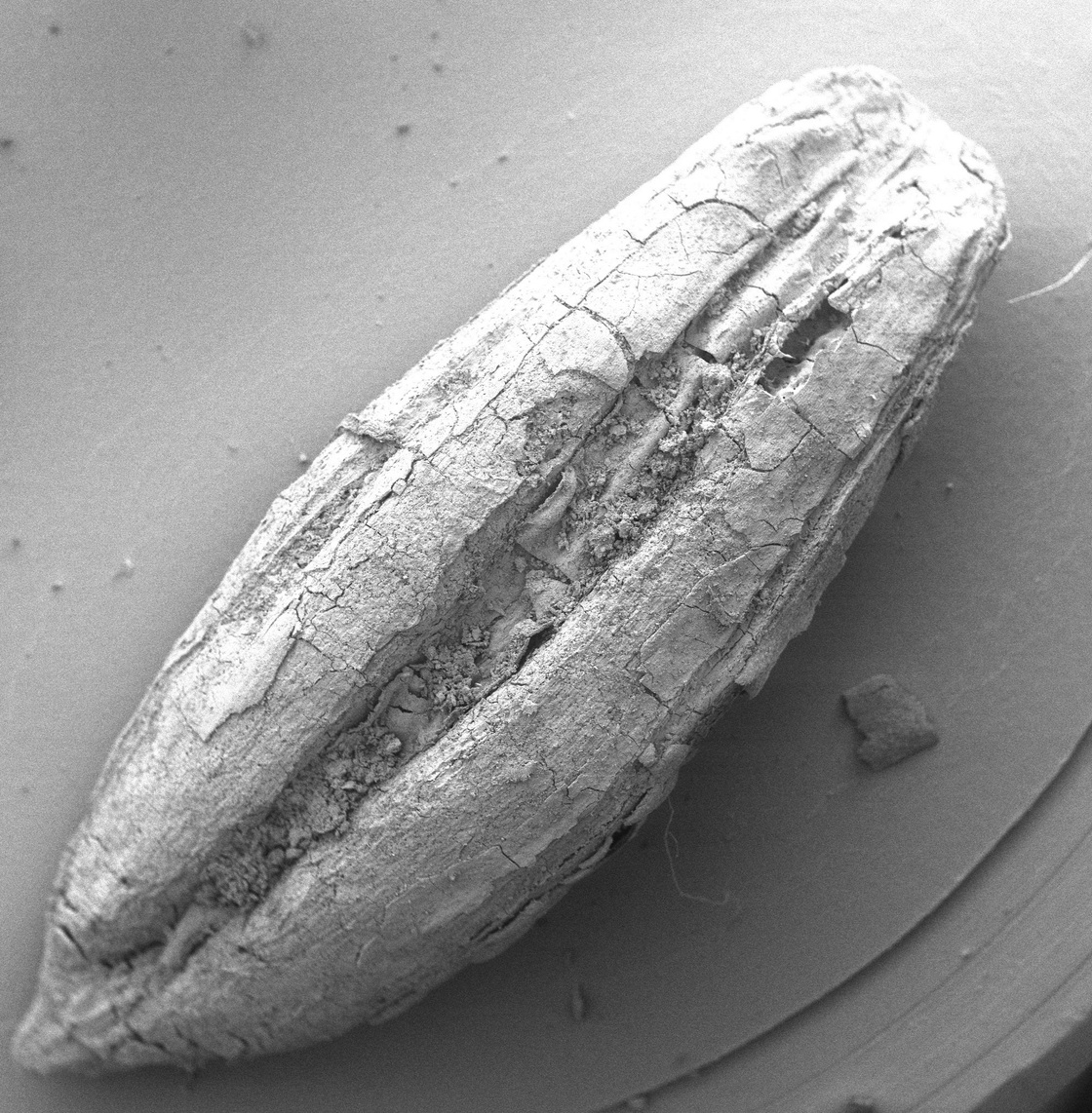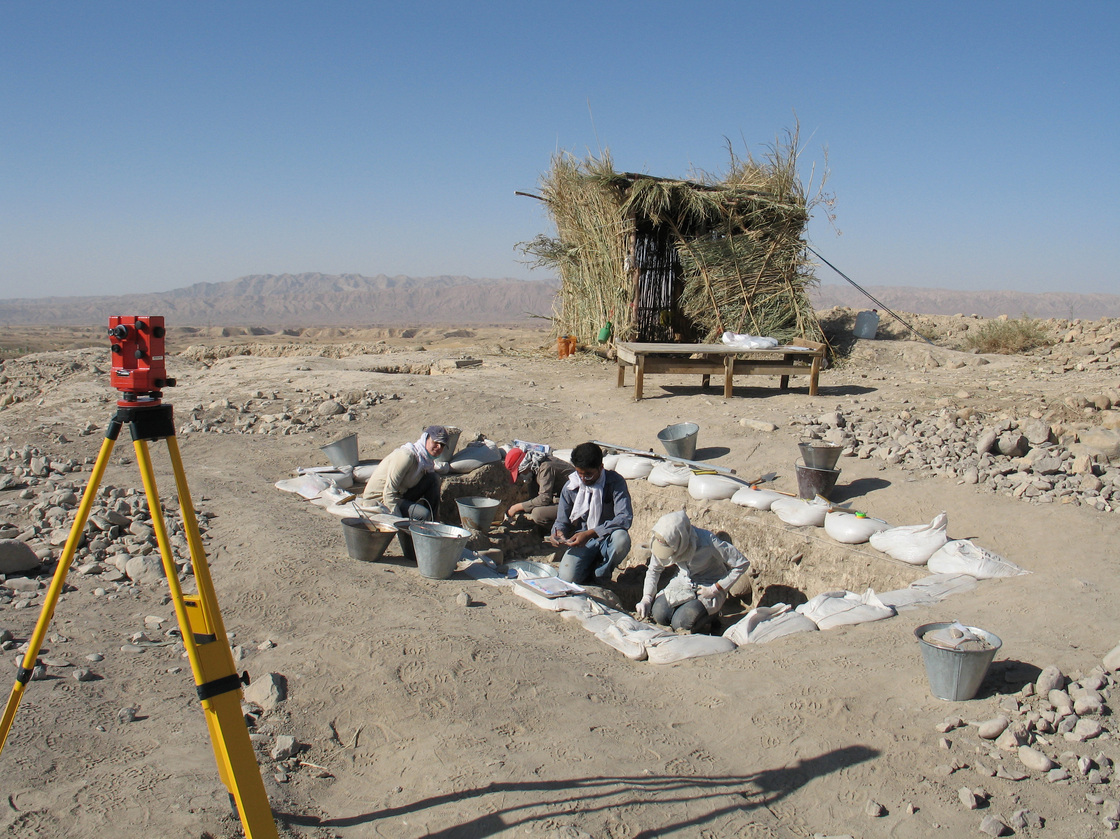Now, Conard is no botanist. He's an expert on stone tools. But even his untrained eye recognized some of the grains.
"They look like lentils you might buy at the store, or pieces of wheat or barley you might have encountered in other aspects of life."
He suspected he was looking at an "agricultural village," but he sent the grains to his colleague Simone Riehl to double check.
Bingo.
"That was a fantastic feeling, when I first get these plant remains under the microscope," says Riehl, an archaeobotanist at the University of Tubingen.
She confirmed that the grains were indeed varieties of lentils, barley and peas. She also identified a range of nuts and grasses, and a kind of wheat called Emmer, known to be a commonly grown crop in later centuries throughout the Middle East.
But most of the grains Riehl looked at were pre-agricultural. "They were cultivating what we consider wild progenitors of modern crops," says Riehl.
In other words, 12,000 years ago, people were simply taking wild plants and growing them in fields. They hadn't started breeding crops yet, selecting varieties for yield and other desirable qualities.
"They were probably just trying to secure their everyday needs," says Riehl.
Now, Riehl's samples spanned a period of two thousand years. And in the younger samples, those about 10,000 years old, she did detect the first signs of domestication: The Emmer wheat from this period had tougher ears. "That's because of human selection," she says. Those tough ears, she explains, helped keep the grains from falling to the ground when they were ripe. It made harvesting a lot easier.
Experts in prehistoric agriculture have welcomed the study, which is published in the latest issue of the journal Science.
"It's allowing us to push back our picture of early agriculture to these very, very initial stages, when people are beginning to play around with plants and their environment," says Melinda Zeder, curator of old world archaeology at the Smithsonian Museum of Natural History.
The study also changes our understanding about the geographic origins of agriculture, she says.
Until now, she says scientists had thought agriculture arose in the western parts of the Fertile Crescent — a region that includes Iraq, Turkey, Syria, Jordan and Israel — because that's where all previous evidences of early agriculture came from.
Iran, on the other hand, is on the eastern edges of the Crescent, and was thought to be "a non-player in the history of agriculture," says Zeder.
The new study proves otherwise, she says. It shows that communities across the entire Fertile Crescent started experimenting with farming around the same time. And that, says Zeder, is exciting.
Copyright 2013 NPR.

